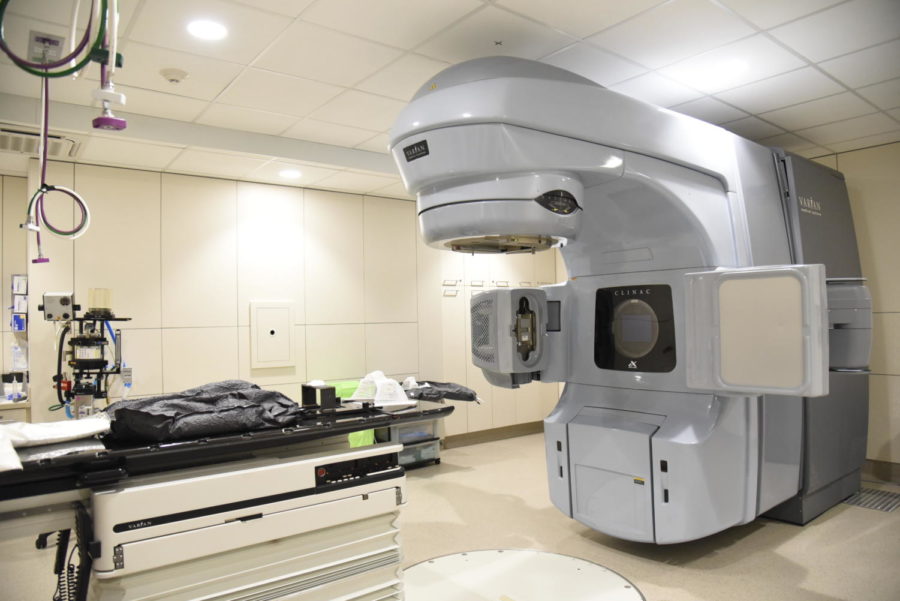Precise radiation therapy helps pets at small animal hospital
January 27, 2020
Patients including dogs, cats and one therapy rat have been treated with the new precision radiation therapy at Iowa State’s Hixson-Lied Small Animal Hospital.
The treatment, known as stereotactic radiation therapy, was introduced to the College of Veterinary Medicine in February 2019.
Chad Johannes, assistant professor of veterinary clinical sciences, was involved with pursuing the new radiation treatment facility.
Johannes said the therapy rat was probably the smallest patient treated so far, but the table can hold up to 440 pounds. The largest patient they have done was around 143 pounds.
The key to radiation therapy is consistent positioning to be precise, Johannes said. All patients are under general anesthesia when they have a computed tomography (CT) scan prior to the radiation to plan out the treatment for the individuals.
For treatment, radiation therapists and an anesthesiologist are present. The patient is placed to direct the radiation to the exact spot needed. The precision of the treatment can reduce the amount of treatments and side effects of radiation therapy.
“It helps us become very precise,” Johannes said. “We’re kind of painting the dose on the tumor and minimizing the effect on normal tissues. That alleviates not all but a lot of the side effects.”
Thirty cases from about seven states, including Iowa, have been treated with radiation therapy. The states include all those touching Iowa except Wisconsin, but Johannes said there are two radiation centers in Wisconsin.
“Our goal is just to increase knowledge and awareness that we have this technology,” Johannes said. “And make it accessible to as many patients as we can.”
Drema Lopez, program coordinator for Veterinary Medical Center, is a radiation therapist. Lopez works with the devices used to hold the animal in the right position on the table. She then monitors the animal from behind closed doors with cameras.
The devices are created for each patient. Some of the devices are a bean bag pillow, dental mold and a customized mask. The devices are used for every day of their treatment.
Lopez said they make sure the patient is in a position to where only the intended area is radiated. An example would be if the area is in the chest, they will pull their front legs slightly forward.
“It’s kind of individualized,” Lopez said. “So it just depends on which patient, where their cancer is at and then also any limitations that they might have; if they’re old or arthritic, we don’t want to cause them stress or anything like that even though they’re under anesthesia.”
The university was supportive, but there were safety aspects to look at, so it took about three to three and a half years to bring the radiation treatment facility to Iowa State, Johannes said.
A part of the safety is the special material of walls to make it denser than concrete. The overall construction of the facility assures the radiation is contained and took about a year to complete.
The cost of treatment can range from $2,500 to $9,000. The price varies based on the patient’s circumstances, such as the number of treatments and if a magnetic resonance imaging (MRI) is needed before radiation.
If radiation therapy isn’t the right option for the patient or the owner wants to choose another type of treatment, they can look into options like surgery or chemotherapy.







